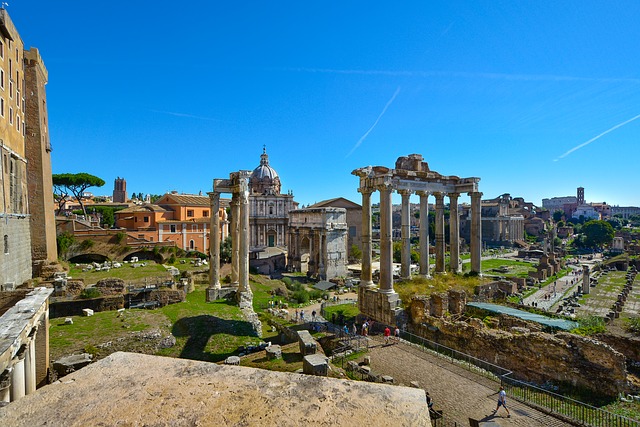
You have seen the Colosseum and the Roman Forum and the Vatican museums, Now what? The Team at Tour Italy Now would like to share our picks for alternative things to do in Rome.
Aventine Hill – Knights of Malta Keyhole
High up on the Aventine hill a short walk from the Circo Massimo is a secret view that few get too see. Head to the Piazza dei Cavalieri di Malta and find the door with a small keyhole too peek through. The view, designed by the famous Italian architect Giovanni Battista Piranesi in 1765, will take your breath away.
Who are the knights of Malta?
Officially named the The Sovereign Military Hospitaller Order of Saint John of Jerusalem of Rhodes and of Malta, but known as Knights of Malta, was created in the middle ages and eventually settled in Rome in 1834. In February 2013 the 900th anniversary of its official recognition by Pope Paschal II was celebrated in Vatican City. The Knights of Malta is a lay religious order with members coming from noble families. Today the the order’s 13,500 members carry out it’s mission is humility and charity overseeing humanitarian projects, hospitals and relief assistance. The order is sovereign and while it controls no territory, it prints its own stamps, coins, license plates and passports.
History of Aventine hill
The Aventine is one of Rome’s famous seven hills. Legend says that Remus, the brother of Rome’s founder Romulus, attempted to found his city here. It became a residential area and home to non-aristocratic, land-owning Roman citizens (plebeian’s) and many religious shrines. Now a quiet neighborhood with elegant villas and palazzos, early Christian churches and peaceful parks.
Monti
Monti is the original rione – district – in Rome. It is set in between four of the seven hills and bounded by the large and busy via Nazionale and via Cavour and near the Forum and Colosseum.
Wander the charming neighborhood of Monti, Rome’s first neighborhood. This was once the home to thieves, gladiators and bordellos, now it is a hip neighborhood of boutique shopping, wine bars and restaurants.
Experience a slice of real roman life by visiting the affectionally called piazetta, Piazza Madonna dei Monti. Sit on the steps of the fountain, built by Giacomo Della Porta in 1588, in late afternoon and watch the school kids playing soccer, families walking the dog, friends meeting up for a chat or a quick drink. It is Roman street theater at it’s very best.
Near the enormous Vittoriano monument and the swirling traffic in Piazza Venezia is the Palazzo Valentini. Since 1873 this building has been the site of the provincial administration for the city of Rome. But it is seven meters below these administrative offices that is where it gets really interesting. Here is where you can experience a virtual journey inside an important ancient Roman Domus. The past is recreated with virtual reconstructions, graphics and videos making the ruins once home to an important Roman noble family come alive with mosaics, paintings, even furnishings. The state of the art technology brings to life the archaeological remains of ancient Roman houses.
Legend or truth? Pope Joan
Not far from the Colosseum you can pay a visit to the Shrine of Pope Joan located on the corner of Via dei Querceti. Was Joan the only female Pope in history? This controversial story has been debated and denied since the 13th century. The legend goes that the Joan was a German woman who lived disguised as a man and rose to become Pope of the Church in the ninth century. It is said that she was discovered during a papal procession, on her way to the Church of the Lateran. Pregnant at the time, she went into labor. Most reports indicate that she was killed that day, either by the angry crowd or in childbirth. Purportedly later popes avoided the crossroads where Pope Joan was killed or died, which was called the Vicus Papissa, or street of the female pope.
Capuchin Crypt
“What you are now we used to be; what we are now you will be…”
The Church of Santa Maria della Concezione on the legendary via Veneto has a creepy surprise. The Capuchin Crypt contain the bones of some 4,000 dead Capuchin monks and the bone and skeletons are artfully arranged into decorative and beautiful designs.There are six rooms in the crypt, five featuring a unique display of human bones believed to have been taken from the bodies of friars who had died between 1528 and 1870. More fascinating than morbid, the brothers see it as a mediation on the fleeting nature of temporal life.











